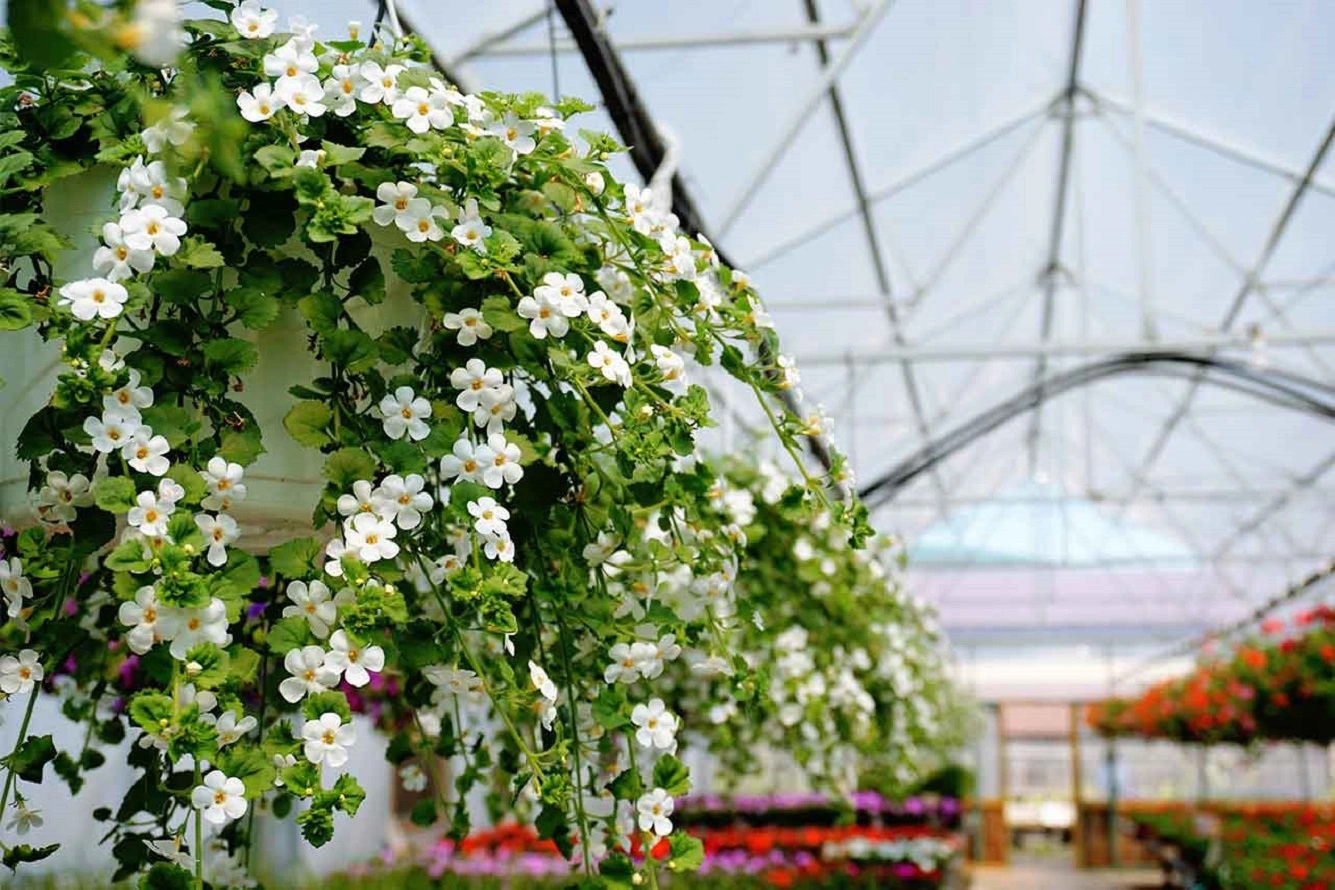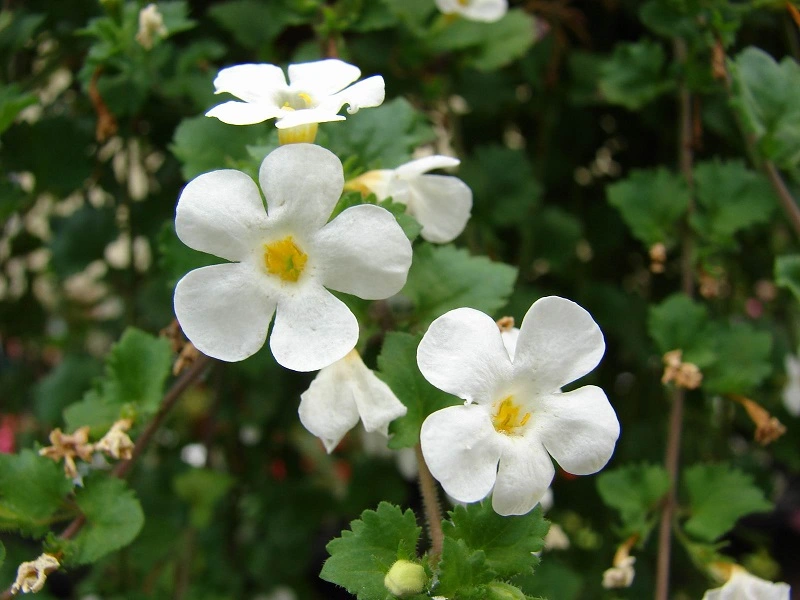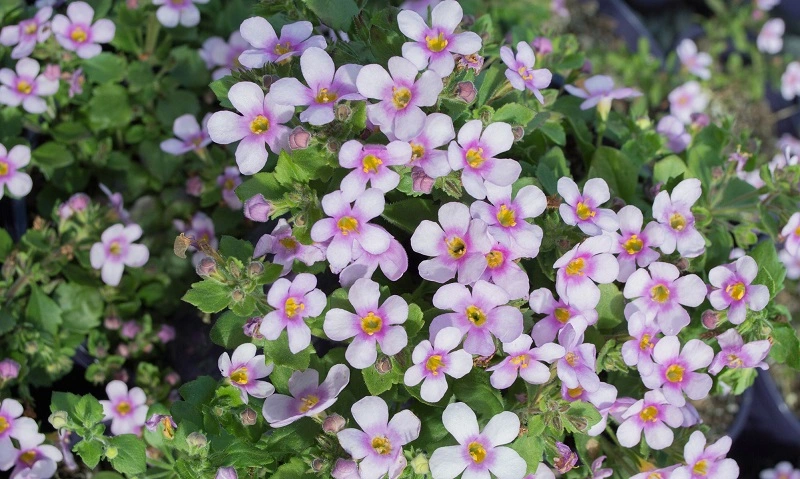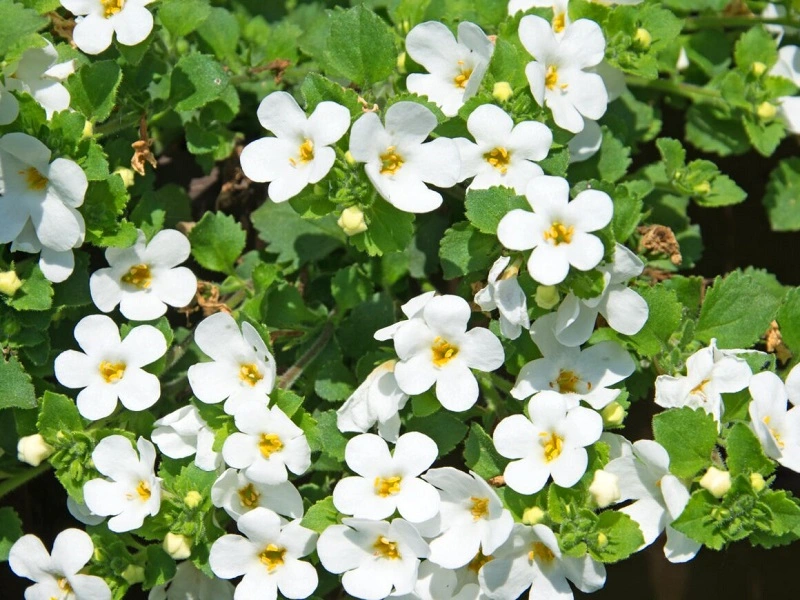Bacopa Plant - Learn How to Grow and Care for Water Hyssop
Bacopa is a popular ornamental plant, often picked as a decoration of balconies and patios. It's moderately difficult to grow, so taking care of it requires at least basic knowledge about hanging plants. Bacopa appears basically everywhere in the world, with over 60 different varieties. Check how to care for water hyssop to enjoy its rich blooming.

Water hyssop – the characteristics of the popular ornamental plant
Bacopa is a popular ornamental plant, also known as water hyssop. It’s usually used to decorate balcony gardens and patios. Sometimes, planted in a pot, it garnishes the entrance to a house. Growing it directly in the ground is not as popular. Bacopa (Sutera diffusus) is a plant from the figwort family. It grows naturally in subtropical zones. Currently, it’s cultivated everywhere in the world.
Bacopa is an annual plant that grows up to 50 cm tall. Its leaves are delicate and small. They have a characteristic heart-like shape. What’s noteworthy is the number of flowers it develops during blooming season. They are typically white or pink. But this characteristic depends on the particular variety of the plant.

Bacopa – a plant of many varieties
Bacopa monnieri is a plant of many cultivars. Here are the most popular and commonly picked ones:
- Blue Sensation – this variety amazes with the color of its flowers when blooming, as they are blue,
- Great Rose – flowers of this cultivar have a characteristic pink color,
- Great Deep Violet – this variety develops purple flowers.
Another interesting cultivar, Sutera Nova has much stronger and thicker stems in comparison with the original. In addition, this type has much richer florescence, and blooming lasts from early spring until autumn. The flowers are much larger than the ones developed by standard varieties of this plant.

How to grow bacopa monnieri?
Bacopa is primarily classified as a hanging ornamental plant. It’s not difficult to grow, but it requires some experience with similar plants. When picking a spot for the plant, consider spots with good sun exposure. The plant can also grow in a slight shade, but note it might diminish blooming rate, and some varieties won’t develop as rich colors as when exposed to sunlight.
The soil in the container should be rich. Acidic pH is the best option. You can also plant bacopa directly in the ground, making sure to prepare the soil in the yard prior to planting.

Water hyssop – how to water the plant
Bacopa is a relatively difficult plant when it comes to watering. It doesn’t tolerate overly dry soil. For this reason it requires regular watering. Do it always when the top layer of the soil has dried. But avoid watering the plant too intensely. Bacopa doesn’t like standing water in its soil, as it might be harmful. Make sure the pot has a hole and a drainage layer to remove excess water. Thanks to this, you can avoid many diseases such as grey mold.
Does bacopa need fertilizing?
If you decided to grow this plant, don’t forget to fertilize it. It’s particularly important during the blooming season – mainly in summer. Liquid plant food designed for blooming plants is a perfect solution. Use it at least once a week, diluting the product in water following the manufacturer’s instructions. Fertilizers for blooming are available in most garden shops.

Bacopa – how to propagate the plant
Bacopa can be propagated in two ways, either by planting its seeds or using cuttings. As for the method with seeds, they should be planted in February and March. Prepare boxes with fertile soil for the seeds. When they sprout and develop first leaves, plant them in separate containers.
Propagating water hyssop from cuttings requires more attention. At the end of vegetative period, pick the best plants and put them in a cool interior with access to sunlight. Move them to a warm spot at the end of winter and begin watering and fertilizing them intensely. When they grow new stems, you can cut them. Place the cuttings in rich soil and water them regularly. They should take root after about two weeks.
Wintering bacopa plants
Bacopa plants don’t tolerate low temperatures. In practice, it means they need protection from frost. Plants growing on balconies and patios have to be taken indoor. Temperatures ranging between 10 and 20°C (50-68°F) are the best for the plant to survive winter.

Bacopa - pests and diseases
Bacopa is likely to get attacked by spider mites and whiteflies. These pests appear on potted plants and feed on their leaves. They typically appear during dry and hot summers. The plant is also prone to various fungi, especially grey mold and root rot. Diseases caused by fungi are usually a result of taking care of the plant improperly.
Bacopa plant – where to buy the plant?
Bacopa is a moderately difficult plant, but if you take a good care of it, it will reward you with magnificent and rich blooming. Where to buy a bacopa plant? Seedlings are available in most garden shops. You can also buy seeds and grow the plant from scratch. Regardless whether you’re buying seeds or seedlings, make sure to purchase from a trusted source. This way, you can be sure they are healthy and won’t spread any diseases to other plant.

📍 What does bacopa plant look like?
Bacopa is a plant of small, delicate flowers. Depending on the variety, they can have different colors. The plant grows up to 40 cm (ca. 16 in) on average – it's not very tall, but spreads to the sides. Bacopa is typically grown in pots, although it can also be planted in the ground.
📍 Bacopa - what is the best location for it?
Bacopa has to grow in a place secured from the wind. The plant prefers sunny locations, but it can also grow in a slight shade – it shouldn't affect the blooming. The soil should be rich in humus, with neutral or acidic pH.
📍 Bacopa - when to plant it?
Plant your bacopa in the second part of May. If you want to plant more than one plant, remember about spacing between them. 25 cm (ca. 10 in) is enough. Thanks to this, each plant has enough space to grow freely.
📍 Why won't my bacopa bloom?
In some cases, the plant might not grow for some. Why isn't your bacopa blooming? It's probably because you transplanted the plant. Bacopa also needs regular watering, and lack of water is a first step to withering.
Featured articles




